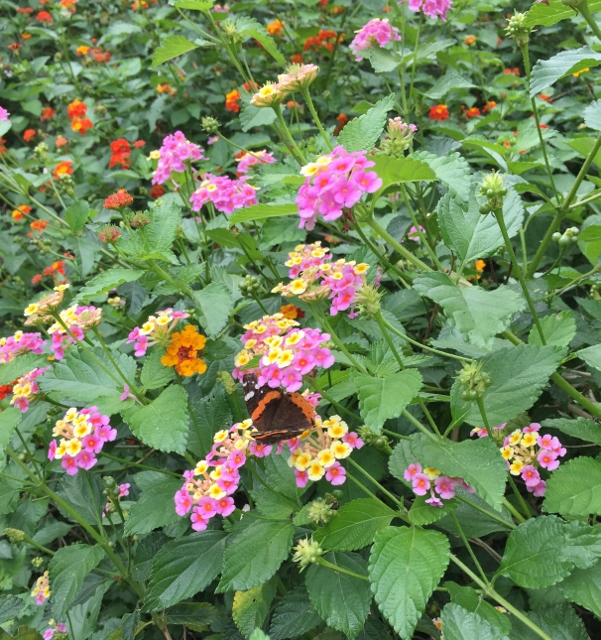
Be kind to the Valley’s habitat this Earth Day
by Anita Westervelt, Texas Master Naturalist
Design your own garden for hours of entertainment the rest of the year and help the native habitat. Clear a patch of ground, visit one of the Valley’s native plant nurseries and fill your freshly cleared area with native plants.
Native plants, plants that have survived hundreds of years in the Valley’s diverse environment, know what to expect — wind, drought and heat. Most native plants enjoy and thrive in the full sun of a Deep South Texas summer.
Native plants attract native pollinators like bees, bugs and butterflies that in turn benefit our natural Valley habitat. With the international push to save monarch butterflies, organizations are promoting native milkweed plants to support monarch caterpillars, and flowers and shrubs that bloom into the winter to provide nectar.
An easy plant to begin with is climbing milkweed, Funastrum cynanchoides, a host plant to monarch butterflies and native in the Rio Grande Valley. It can be planted near a fence or allowed to vine around a support. Colorful flowering plants near the milkweed will provide nectar for emerging monarchs and draw many different species of butterflies and other insects.
Some quick growing native plants that will bloom by summer for your nectar sources include native lantanas, Lantana camara, Lantana velutina or Lantana urticoides; cowpen daisy, Verbesina encelioides; heliotrope, Heliotropium angiospermum or Heliotropium indicum; and white plumbago, Plumbago scandens.
Mistflowers are absolute butterfly magnets. Crucita, blue mistflower, Chromolaena odorata; betony leaf mistflower, also called Padre Island mistflower, Conoclinium betonicifolium; and blue boneset, spring mistflower, Tamaulipa azurea all bloom spring, summer and fall. Crucita blooms heaviest in the fall and has been known to attract 40 some species of butterflies in a single afternoon.
If you have room, consider native sunflowers such as common sunflower, Helianthus annus, also called mirasol. These are the sunflowers commonly seen on roadsides and at the edges of fields here in the Valley. Sunflowers attract myriad beneficial pollinators as well as provide nectar for butterflies.
If it’s a tree you’re wanting, native wild olive, Cordia boissieri, blooms all year, attracting butterflies, bees and birds.
A wonderful large shrub that blooms nearly all year is Berlandier’s fiddlewood, Citharexylum berlandieri. It produces blooms for nectar and berries for birds. It needs a large area and can reach to five feet with a six-foot spread.
A smaller shrub ideal for attracting butterflies is skeleton leaf golden eye, Viguiera stenoloba. It will flower more with periodic deadheading — clipping or shearing off about six inches at the top after blooms die off. Mistflower can be treated the same way.
Whatever your choice, once you put your plants in the ground, water them in well and check them every day for the first couple of weeks. Water two or three times a week — more often if the plant looks heat or drought stressed. Keeping them well watered will help them establish into their new habitat. Once established, most native plants won’t need continual care.
Be kind to the Valley’s natural habitat when you consider selecting plants for your garden. Sometimes non-native plants love our environment and become invasive, overpowering, hindering and even wiping out the growth of healthy native specimens.
For more excellent nectar plant choices, ask the native plant growers when you visit.
Check out www.rgvctmn.org for a list of local native plant nurseries. Under the Interesting Links dropdown, go to RGV Plants. Phone numbers are provided for directions and hours or appointment times.
The Rio Grande Valley Chapter, Texas Master Naturalist develops knowledgeable volunteers dedicated to the study and conservation of natural resources and natural areas in the Lower Rio Grande Valley and helps the natural world through service, outreach and education.